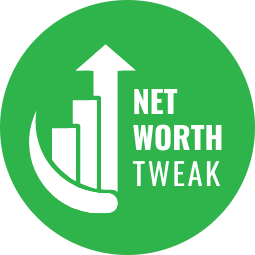Building Financial Stability Through Smarter Credit Choices
Managing money in today’s economy requires more than just paying bills on time. It requires careful planning, thoughtful budgeting, and a clear understanding of the credit tools available. When individuals rely on the wrong type of borrowing or overlook the importance of creating a sustainable budget, they can quickly find themselves in a cycle of debt that is hard to escape. For anyone looking to improve their financial footing, the foundation begins with building a budget and recognizing how different types of credit can either support or undermine long-term goals.
Why Budgets Matter in Everyday Life
A budget is not just a list of expenses; it’s a financial map that shows where money comes in, where it goes, and how it can be better managed. Without one, it becomes too easy to spend beyond your means or lean on costly forms of credit to cover gaps. By creating a detailed plan, people gain a clearer picture of their priorities, identify areas where they may overspend, and find room to save for the future. This process doesn’t just help reduce financial stress—it empowers individuals to make decisions with confidence.
See Also: How to Build a Spending Plan That Fits Your Lifestyle
The Role of Credit in Budgeting
Even with a budget in place, unexpected expenses and emergencies can arise. This is where credit enters the picture, offering a bridge when cash reserves fall short. However, not all credit products are the same. Some provide stability and flexibility, while others carry risks that can derail financial progress. For those facing financial challenges, options for borrowers with less-than-perfect credit may appear as a lifeline, but these should be approached with caution. While they can provide short-term relief, relying too heavily on them often results in higher costs over time.
Understanding Different Types of Credit
Credit comes in many forms, each with its own set of benefits and drawbacks. Credit cards, for example, can be useful tools for managing short-term expenses, but high interest rates make carrying a balance costly. Personal loans, especially those with fixed repayment schedules, offer more predictability. Installment loans can help spread payments over time without the unpredictability of revolving debt. On the other hand, payday-style loans or products that cater specifically to struggling borrowers often charge steep fees that add financial strain instead of relieving it.
Building a Stronger Foundation
The key to avoiding dependency on high-cost credit is to focus on strengthening financial foundations. This means prioritizing an emergency savings fund, even if contributions are small. Having three to six months’ worth of expenses set aside can serve as a buffer during difficult times. It also means reducing unnecessary spending and committing to paying down high-interest debt before it grows unmanageable. A thoughtful budget combined with disciplined saving and repayment strategies creates more resilience, lessening the need for riskier borrowing choices.
Credit Scores and Their Influence
A person’s credit score plays a powerful role in the types of borrowing available to them. Higher scores unlock lower interest rates and more favorable terms, while lower scores often restrict choices to more expensive products. This reality underscores why monitoring credit health is so important. Reviewing credit reports regularly, paying bills on time, and keeping debt balances low are all steps that gradually improve credit standing. Over time, this work opens the door to more affordable credit options and greater financial flexibility.
The Risks of Quick Fixes
When money is tight, the temptation to reach for fast, easy borrowing solutions is strong. Short-term lenders often market their products as simple ways to bridge gaps, but convenience comes at a high price. Borrowers may find themselves trapped in a cycle of repeat borrowing, where interest and fees consume a growing portion of income. Instead of resolving financial strain, these quick fixes often make matters worse. It is far better to explore safer, longer-term solutions than to fall back on products designed primarily to profit from vulnerability.
Alternatives That Support Financial Growth
Fortunately, there are healthier alternatives available. Personal loans from reputable lenders provide structured repayment terms and generally come with lower interest rates than payday-style borrowing. Installment loans can also provide stability, giving borrowers time to repay without overwhelming monthly demands. Community-based credit unions, nonprofit organizations, and government-backed financial programs may also offer fairer terms for those who qualify. Each of these options encourages progress toward financial stability rather than trapping borrowers in cycles of debt.
Borrowing With Care
Whenever borrowing becomes necessary, it is important to weigh the full cost, not just the immediate convenience. Calculating how much will ultimately be repaid, understanding the impact on monthly budgets, and considering how debt affects future financial goals are all critical steps. Borrowing should always support long-term plans, not undermine them. By making careful, informed choices, individuals can use credit as a stepping stone rather than a stumbling block.
When Last Resorts Become Necessary
In some cases, borrowing may feel unavoidable despite best efforts to budget and save. For individuals in these situations, options for borrowers with less-than-perfect credit may provide temporary relief. Yet, it is crucial to treat such solutions as a last resort rather than a routine option. Depending too heavily on them can cause more harm than good, leading to deeper financial challenges. Whenever possible, individuals should first explore personal loans, installment loans, or alternative lending solutions that align more closely with sustainable financial health.
Moving Toward Long-Term Success
The ultimate goal of budgeting and credit management is not just to get by from month to month, but to build lasting financial strength. This involves reducing debt, growing savings, and making intentional choices that align with future aspirations—whether that means buying a home, starting a business, or simply living with less stress. Success is not about avoiding all debt, but about using it wisely and responsibly. By combining the discipline of budgeting with careful credit decisions, individuals can create stability that lasts through both challenges and opportunities.
Conclusion
Financial security doesn’t come from avoiding mistakes altogether—it comes from learning, adjusting, and making more informed decisions over time. Budgets provide the roadmap, and credit serves as a tool that can either help or hinder the journey. By focusing on sustainable choices, strengthening credit health, and reserving high-risk borrowing as a last resort, individuals position themselves for long-term success. With patience and persistence, it is possible to build a future where money is less of a burden and more of a tool for achieving life’s goals.







